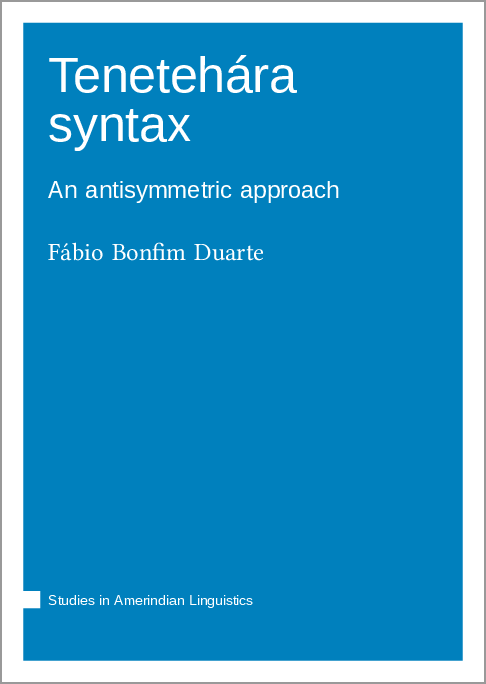We log anonymous usage statistics. Please read the privacy information for details.
Forthcoming: Tenetehára syntax: An antisymmetric approach
Synopsis
The main objective of this book is to demonstrate that Tenetehára is a mixed order language in the sense that it exhibits properties of both head-initial and head-final languages, thereby exhibiting typological properties of VO and OV types. Greenberg (1963) and Hawkins (1979) argue that the languages of the world can be subdivided into two basic types: one in which the object follows the verb, the VO type, and the other in which the object precedes the verb, the OV type. According to this analysis, consistent typological languages tend to harmonize the relative position of complements in relation to heads across the syntactic structures. In contrast to these typological possibilities, Greenberg (1963:109) lists a highly disharmonic Type 8 that allows a mixed word order: a mixture of head-initial and head-final structures. Actual languages that exemplify Type 8 are not found in Greenberg’s and Hawkins’ data, a situation that could lead one to argue that this particular combination of disharmonic word order is excluded from the realm of typological possibilities across the world languages. As Tenetehára has both VO-Aux and OV-Aux and allows the NP-AdjP, D-NumP-NP-AdjP-QP, Gen-N word orders, this shows that Type 8 languages do exist. In sum, it can be concluded that Tenetehára is a good example of a Type 8 language, a pattern that is missing in Greenberg’s (1963) and Hawkins’ (1979) sample.
Based on the syntactic disharmony shown in the Tenetehára Grammar, another objective of the present research is to offer a unified account for why Tenetehára permits both head-initial orders and head-final orders across its syntactic phrase markers. In order to find a theoretical explanation for this grammatical mismatch, the main aim of this research is to develop a formal approach based on the antisymmetry theory proposed by Kayne (1994). If we follow the parametrical hypothesis, one might be led to conclude that phrasal categories in Tenetehára can be both head-initial and head-final, the option being context-sensitive. I argue against the directionality-based approach to derive the typological disharmony in Tenetehára. Thus, an alternative proposal is to assume an asymmetrical approach, according to which phrase markers in all X-bar phrases conform to a specifier‑head‑complement order. Therefore, we can account for the mixed headedness effects discussed above in terms of movement. A unified account is proposed in order to derive the head-final structures so that all head-final phrases are derived by means of successive leftward movement of the complement of functional heads to their specifier position. In sum, the descriptive and theoretical analysis developed in this book shows the importance of investigating an understudied language, since it can bring new data that help us to shed new light on assumptions that have been made both in typological and generative theories.



